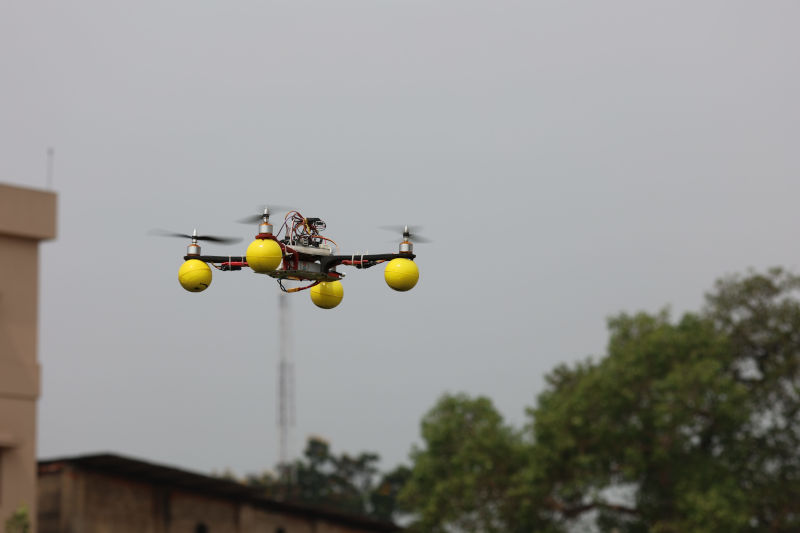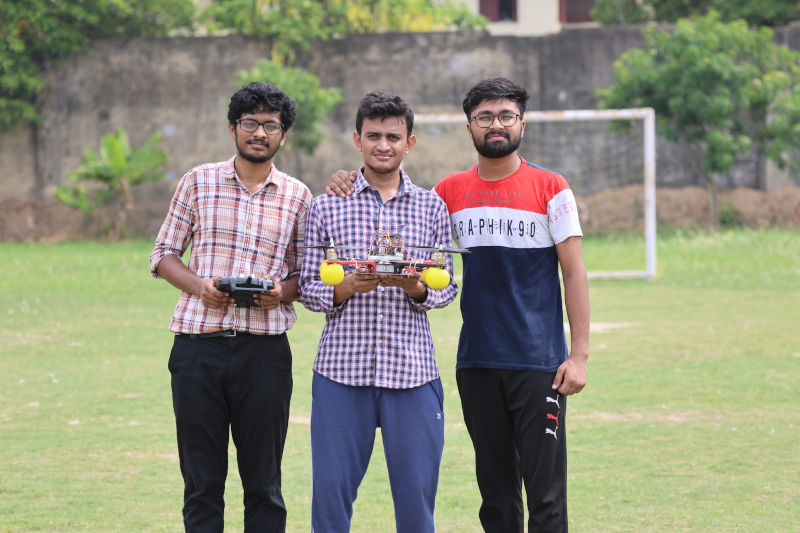

Objective
“Instead of giving solutions, create environment where people can find out their own solutions.”
Though the concept initially started at MIT, it is now being implemented in over 125 labs over 34 countries.
Fundamental objectives of the laboratory include:
- Challenging the creativity of students
- Making technology easily accessible to common people
- Developing an open-ecology through sharing of ideas and knowledge
- Creating an interdisciplinary/multidisciplinary platform for implementation of various ideas
- Training and empowering the students in designing, assembling, fabricating and computing digital and microprocessor controlled systems, using a hands on approach
- Designing cost effective real life devices/gadgets which can benefit human beings and society as a whole
Equipment and Tools:
Our department’s Design and Fabrication Laboratory (DFL) is equipped with a range of equipment and tools that support research and teaching in the department. The laboratory provides facilities for designing, developing and building scientific instruments, equipment, and components.
The laboratory includes an open-source platform such as the Arduino IDE, various high-quality Arduino boards, drone components, servo motors, robotic car chassis, LCD displays with I2C protocol connectivity, membrane keypads, Bluetooth modules, WiFi modules, RFID, ultrasonic sensors, IR sensors, and other tools.
The availability of such equipment and tools offers the students and researchers of our department the opportunity to design and develop innovative and advanced scientific instruments and systems. Moreover, the laboratory supports the integration of practical hands-on experiences and promotes learning beyond the traditional classroom setting.
The laboratory has enabled the development of several projects, such as the design and development of an automated robotic car, a smart home system, and a drone-based aerial survey system. These projects have helped students gain practical experience in building and designing advanced systems
How the laboratory supports research and teaching in the department ?
The Design and Fabrication Laboratory in our department plays a crucial role in supporting research and teaching activities. The laboratory provides M.Sc. students with hands-on training in designing and building microprocessor-controlled hardware with real-life applications. This enables them to understand the practical aspects of implementing theoretical concepts.
The laboratory also provides a platform for students to undertake research projects. By leveraging the equipment and tools available in the laboratory, students can design and fabricate complete projects. These projects may involve areas such as Robotics, Thermistor, Agriculture & Irrigation, Scientific measuring instruments, Medical devices, Sports, etc.
The laboratory’s focus on practical applications helps to bridge the gap between theory and practice, providing students with valuable experience in developing and building hardware systems. Additionally, the laboratory also provides opportunities for collaboration with industry and other research organizations, thereby exposing students to real-world problem-solving scenarios.
Examples of projects that have been completed in the laboratory:
The Design and Fabrication Laboratory has been instrumental in the completion of several exciting projects that demonstrate the practical applications of microprocessor-controlled hardware. Here are some examples of projects that have been completed in the laboratory:
- Drones: The laboratory has supported the design and fabrication of drones with various applications, such as crop monitoring, disaster management, and surveillance.
- Fingerprint-based class attendance system: This project involved the design and fabrication of a system that uses fingerprint recognition to track attendance in classrooms.
- Smart automated traffic control system: This project involved the design and fabrication of a system that uses sensors and microcontrollers to control traffic flow at intersections.
- 2-D plotting CNC machine: This project involved the design and fabrication of a computer-controlled machine that can create two-dimensional shapes using a range of materials.
- Firefighting robot: This project involved the design and fabrication of a robot that can navigate through fire-damaged areas and extinguish fires using water.
- Smart home to control electrical equipment: This project involved the design and fabrication of a system that allows users to remotely control electrical appliances in their homes using a mobile device.
- Gesture control car for disabled persons: This project involved the design and fabrication of a car that can be controlled using hand gestures, making it accessible to disabled persons.
- Automated color sorting machine: This project involved the design and fabrication of a machine that uses sensors and microcontrollers to sort objects based on their color.
- Password-controlled door lock system: This project involved the design and fabrication of a system that uses a password to control access to doors or other secure areas.
These projects demonstrate the laboratory’s focus on practical applications and its ability to provide students with valuable experience in designing and building microprocessor-controlled hardware.
